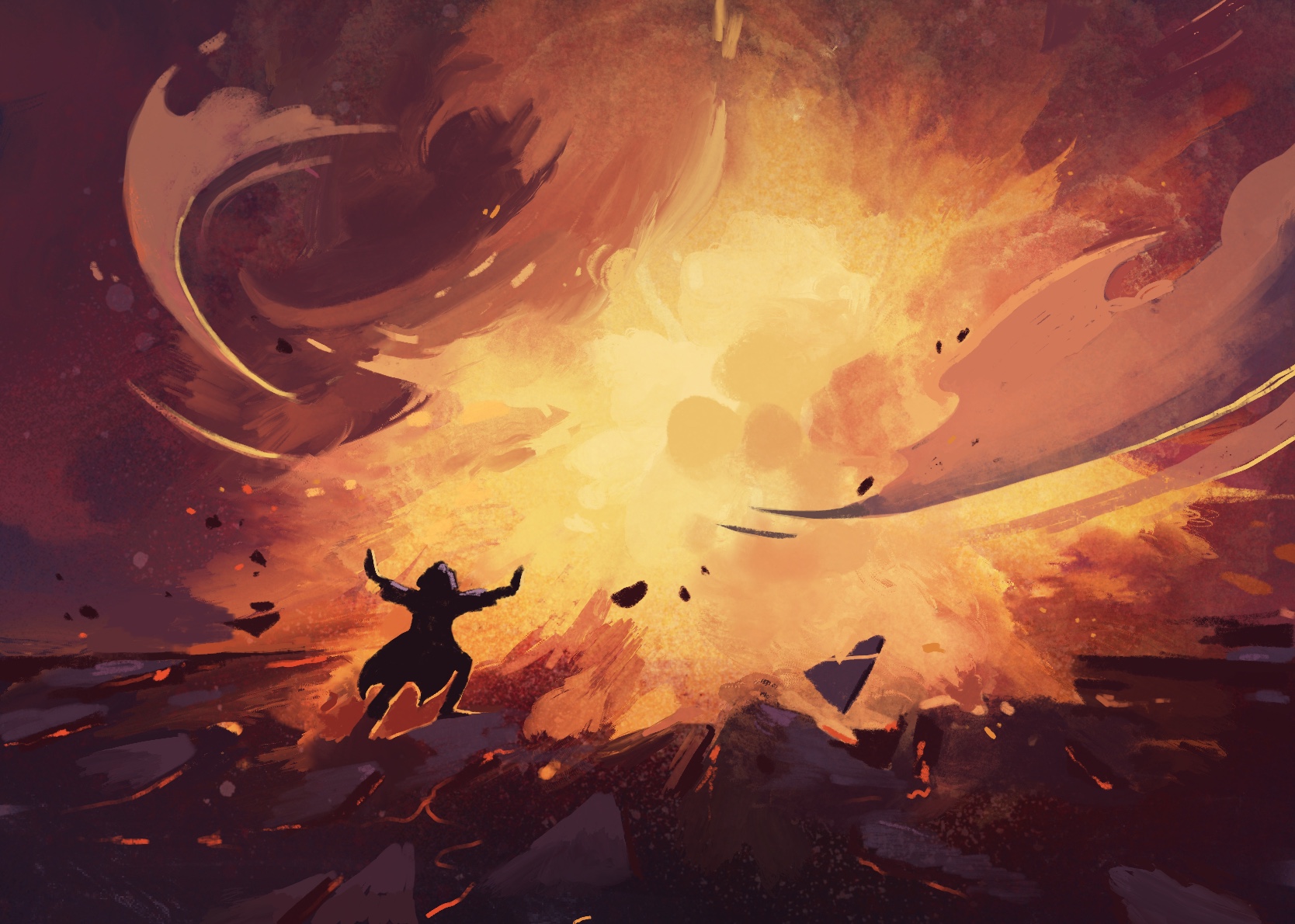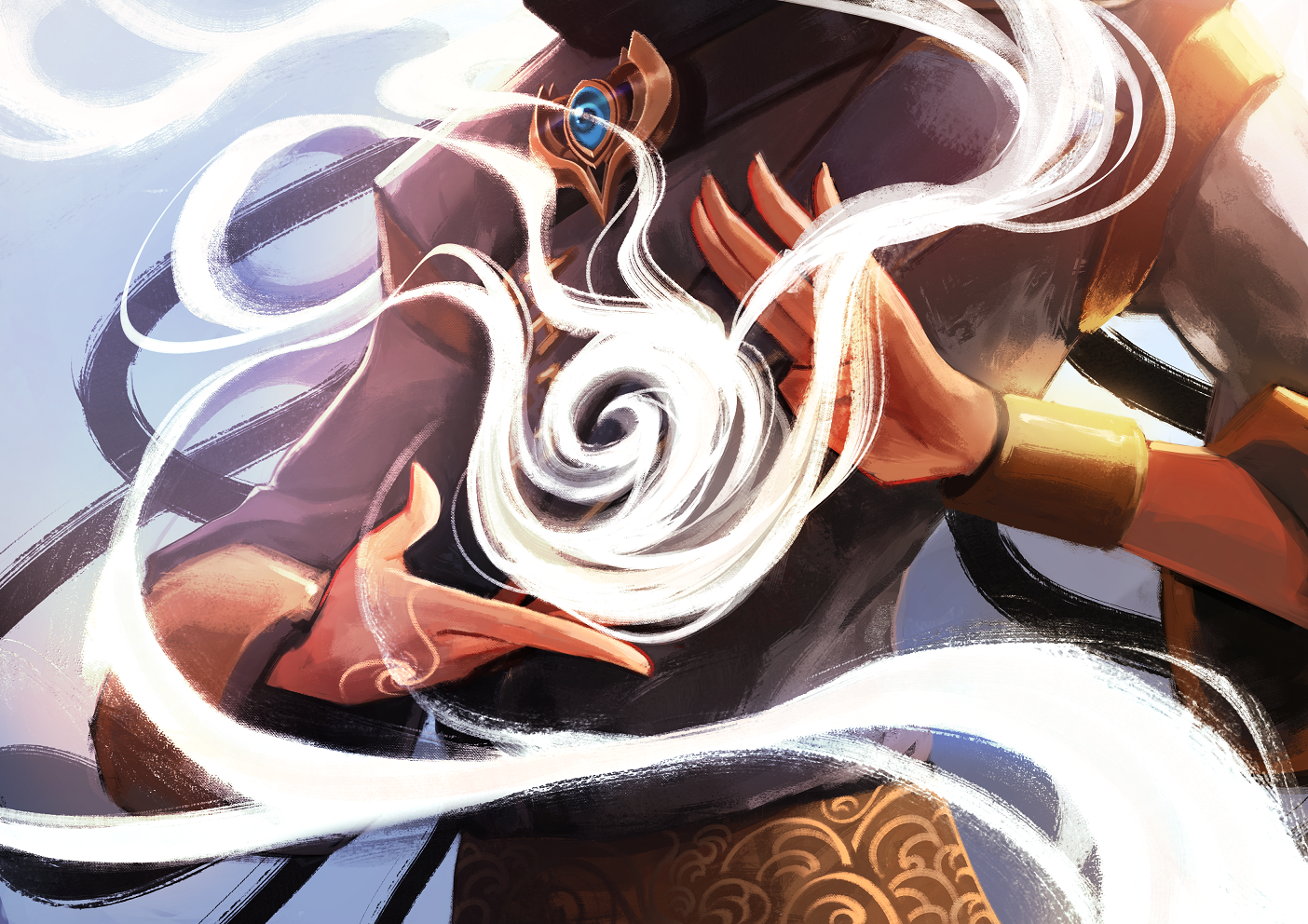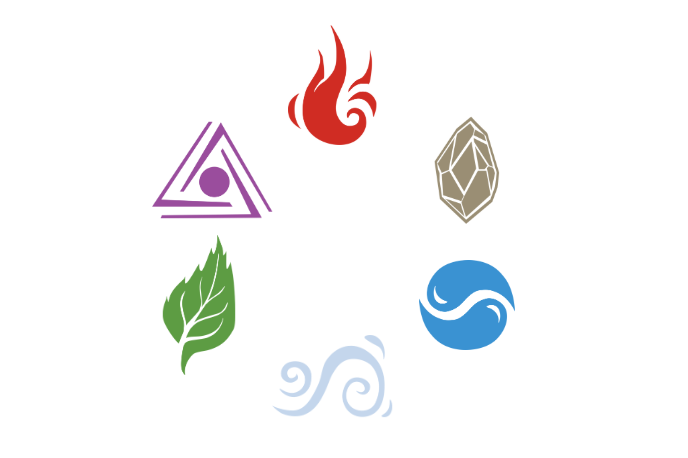About Magic The Gathering, February 18, 2020
Hey Mages!
Yes you read well, today we’ll talk about Magic The Gathering, the actual 25 years old TCG that was the first of its kind. Today we’d like to answer this simple question: “What is so different between Mage Noir and MTG?”
First, we LOVE Magic: The Gathering, would it be on paper (Vincent started playing 25 years ago when the game just came out in Europe) or online with MTGA (though we can’t really brag about our ranks). We are big fans and it had a real influence on Mage Noir, of course, because MTG invented so many things. We want MTG players to be familiar with some elements when they learn Mage Noir: we don’t see the point to reinvent the wheel, especially when some game mechanics work so well. Other successful TCGs have done quite the same. However, if at first glance an MTG player will see similarities, Mage Noir is a totally different game and we will explain that here (“What? I start with 20HP?! You guys have no personality! And starting with 20HP is protected by copyright btw!”).
Getting straight to the point: What is so different?
So many things actually. If you’ve had the time to read all of the different game design talks we’ve posted lately you would have a very good overview of all the differences.
(You’ll get various links to the different topics throughout this post if you’re interested)
The crafting system, a whole new take
In MTG, a spell functions perfectly fine by itself and you can play it as long as you have the right Mana for it. It is a perfectly fine way of viewing magic.
But we decided to take another approach. We thought that in order to cast a very big fireball, you would first need to make a smaller one, that would eventually grow up thanks to your magic powers.
This is how our spellcrafting system appeared. This simple idea shaped the game entirely and it created a whole new experience. Now in Mage Noir when you cast a spell, you can choose to unleash its powers right now, or you can put it aside and channel it to allow yourself to cast even more powerful ones.
This constant choice of instant benefit versus long term power is the heart of the game and makes it a truly intense experience that you’ll remember for a long time.
Learn more on the spellcrafting system right here: The spell crafting system, February 12, 2020
Simpler rules for newcomers
We worked really hard on our ruleset to make it as easy to understand as possible while keeping a lot of depth to it. We did lots of changes, tried lots of gameplays and tested them with more casual players.
After all this testing, we can now assure you that Mage Noir is the kind of game that you can explain to your younger siblings and actually play with them. We think having 9 distinct phases during a single turn and 7 different types of cards is a bit hard to grasp when starting to play.
The depth of the game is in what you can do with the cards, not about what category they belong to. It’s less arbitrarily, less confusing and more exciting!
Less creatures, more magic
Around 60% of MTG cards are creatures. It was really great at first, but now every other successful TCG (Hearthstone, Gwent, Legends of Runeterra…) focus mainly on creatures as well. In comparison, if we count cards in our first edition that can inflict regular damages and have health points, the current ratio of creatures we have in Mage Noir is… 2.5%. So what do we do with all this space? We give powers to the player of course!
You are the avatar of power and might that you want to be. You get to fight one on one with another Mage. You get the thrill of the fight and the feeling of victory.
Long story short, you get to be a Mage, not a Warlord. Isn’t that wonderful?
Learn more on why reducing the importance of creatures right here: Putting less creatures in the game, february 11, 2020

Drawing your resources, something we’re not a fan of
Even if we are big fans of MTG, we have to admit that the Mana system is one of the most frustrating game mechanic we’ve seen on the long term. Having to draw your lands can mess up a game in lots of ways.
First scenario: You don’t get enough lands and don’t get to play.
Second scenario: You get too many lands but since they don’t do anything, you don’t get to play either.\
The other issue is that when it doesn’t happen to you, it happens to the opponent. He doesn’t play anything and you have a clear board to unleash your strategy. Not very satisfying isn’t it?
To avoid that, we decided to put the Mana system outside of your deck. It is something you can rely on, that is clear, consistent and that encourages tactical thinking.
Speaking of which, we know for sure that our shared Mana pool system is something you’ve never seen before.
Yes! A shared Mana pool. Whenever your opponent uses Mana he gives it back to you and makes you stronger. This adds a bit of tactical thinking when you want to throw huge combos at your opponent, as well as giving some consolation when you get hit hard in the face with a huge fireball.
Learn more on our resource and Mana system here: The shared mana pool, February 13, 2020

About randomness, a more balanced approach
Following all this resource subject, we thought that randomness and draws is an interesting mechanic for every card games, but we also thought it had to be toned down a bit.
This is why we took some measures in our game design to reduce the importance of luck and randomness. We used many ways to do that, but essentially, by reducing the decks sizes (40 cards) while leaving the number of times you can put the same card in a deck (4 times) we increased the odds of getting the card you want from 6% to 10%, which is a pretty big deal.
But it was not enough, so we turned mulligan into a determined choice rather than a gamble.
We thought it was important, both for the gameplay experience and for competitive play. True Mages rely on decisions and skill more than luck.
Learn more about reducing randomness in the game here: Reduce randomness, February 17, 2020
Elements are NOT colors
This is a point that we would like to be extremely clear about.
In Magic, new players tend to think that Red is Fire and that Blue is Water. But experienced players know that it’s not the case. Goblins aren’t made of fire and counterspells aren’t made of water.
If you talk to an MTG player about the color red by calling it fire there is a pretty big chance he’ll correct you.
Well in Mage Noir we have much more natural elements that are literally representing those, Air, Fire, Water, etc.
They all have their strength, their weaknesses and their own way of doing things. They all complement each other and interact with each other: water and fire make steam, a flame in a forest can start a big fire, an earthquake in the ocean will lead to a Tsunami, etc. This is wonderful as it gives a fresh new way of seeing things while keeping it very natural and logical. Thus, a whole new world of combinations and interactions opens up. Everyone can find the element they love and we’re very excited and impatient to see you Mages find your favorite one.

Ascend
Another very important mechanic that Mage Noir has and MTG doesn’t is the Mage Noir status. In addition to making you incredibly more powerful, it also completely changes the pace of a game by giving exclusive effects to the player. Playing a ritual to become a Mage Noir is a thrilling moment as well as a complete game changer.
Learn more on becoming a Mage Noir here: The Mage Noir status, February 14, 2020

Wow that’s a lot of gameplay differences, anything else?
Of course we got other things to tell you about! Gameplay isn’t the only thing a game has to offer!
A modern take on the universe
The universe in which the Mage Noir lore evolves is very different from MTG. Magic has this classical fantasy setting with a multiverse and an avalanche of monsters, places and archetypes that we’ve already partly seen in previous fantasy universes.
We decided to take a more realistic approach and create a lore that is plausible. The Mage Noirs are all part of “The Circle” a group of time traveling Mages that have been controlling Mankind in the shadows for as long as we can remember.\
So in Mage Noir you won’t see weird monsters, Dwarfs and Goblins as you’ve seen so many times before and after MTG. Once again, we love weird monsters and a good Dwarfs VS Goblins battle! But we’ve seen it so many times in so many games that we really feel the need for something else!
We like this approach because even though it is far fetched, it might actually be very real. But who are we kidding, time traveling Mages don’t exist… unless…?
Magic as an artistic science
In the Mage Noir universe, magic as an art is available to everyone dedicated enough to discover its existence. It comes from a deep understanding of the laws of the universe and as such is discovered by the most curious people. But it is also a complex thing to manipulate, that asks for creativity and dexterity.
To put it simply, magic is a science as well as an art form. We think it is a more plausible way of considering it rather than a burst of energy coming from your emotions and places you visited that are very far away (Although MTG’s take on the matter is also interesting, don’t get us wrong. It’s just not the same).
An affordable rhythm
Even though refreshing the metagame is cool, we think releasing a new set every 3 month is definitely too hard to follow for players, especially financially.
In the future we plan to release new sets, but to make it easier for players to follow the rhythm, we decided it would be around one set per year (if the game meets the success we hope thanks to you!).
Although nothing is carved in stone, we might release some small numbers of new cards between sets to refresh the metagame a bit. But it will definitely not cost as much as getting up to date on a whole new set.
Because what would be the point of creating new spells if you Mages can’t even play them?
Conclusion
We have taken inspiration from lots of card games actually, and other board games and computer games, as they all have something to teach about what to do and not to do. But our game is very different from what exists on the market currently. Between new mechanics, very strong game design positions and exclusive takes on the genre, Mage Noir is truly one of a kind.
Before ending this talk, we would like to have a word for everyone working on MTG: Thank you! Both for creating an amazing game that we love to play, and for warning us with mistakes that had to be make. You guys are amazing and card games would have never been the same without you.
Thanks for your time Mages! Until next time, take care!